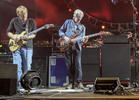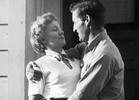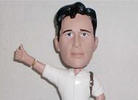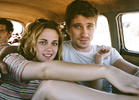
"You could smell tea, weed, I mean marijuana, floating in the air, together with the chili beans and beer." – On the Road
It's Jack Kerouac's centennial. Born on March 12, 1922 in Lowell, Massachusetts to French-Canadian parents, Kerouac attended Columbia University (he dropped out) and then served in the Merchant Marines and Navy during World War II. By the late '40s, he started working on his breakthrough book, On the Road, After much traveling across the country and back numerous times, Kerouac completed it and On the Road was finally published in 1957. He famously typed the book on a long paper scroll.
Growing up, I was extremely interested in On the Road and its sister book Visions of Cody. Both feature Kerouac's alter egos - Sal Paradise and Jack Dulouz - as well as Neal Cassidy's (Dean Moriarty and Cody Pomeray), Allen Ginsberg's (Carlo Marx and Irwin Garden), William Burroughs' (Old Bull Lee and Bull Hubbard) and others from he Beat poetry and literature scenes based in New York and San Francisco.
Following the On the Road map in the early '70s, I cut a path from New York to Denver to San Francisco to Mexico to New Orleans to Mexico and back, several times, sometimes stopping in the Midwest, other times going clear coast to coast. I was a hippie with beatnik aspirations. I loved jazz (thanks to my dad), smoked pot, distained conventions and enjoyed trekking along America's endless highway system and small country roads as well to obscure tourist destinations.

The freedom to travel expanded my worldview. Until college, I'd never been farther away than Atlanta. But after a teacher showed us slides from her home state Wyoming, I felt I had to go there to see the expansive prairies, tall mountains, huge trees and other cities smaller than New York.
One of my best friends had the travel bug too. So Ed and I plotted a trip out West after our first year of college in 1972. Like Kerouac, we rode Greyhound buses and hitched rides. That summer — Grand Canyon, Rocky Mountain National Park, the Black Hills, a Grateful Dead show in Berkeley — whetting our appetite for more. The next summer Ed bought a VW van. We visited friends we'd met on the first trip in Iowa and Kansas, went to a tent revival in West Virginia and a passion play in Arkansas (we were actually in it), and crossed paths with a bear in the Smokey Mountains.
After our third years of college, we both decided to drop out and travel some more. Having completed a semester as editor-in-chief of the school newspaper, I was no longer interested in going to class. Surprisingly, our parents did not object. We took off in October of 1974 and for the next two years moved around quite a bit before settling in San Francisco for a year. Ed would stay in California as I headed home via Mexico and Central America with another good friend. I returned to New York in 1976, after Jimmy Carter was elected president, for good. My "On the Road" days had ended.
"Following the On the Road map in the early '70s, I cut a path from New York to Denver to San Francisco to Mexico to New Orleans and back, several times, sometimes stopping in the Midwest, other times going clear coast to coast. I was a hippie with beatnik aspirations."
Kerouac was a white digger, someone who was into black culture. "At lilac evening I walked with every muscle aching among the lights of 27th and Welton in the Denver colored section, wishing I were a Negro, feeling that best the white world had offered was not enough ecstasy for me, not enough life, joy, darkness, music, not enough night," he writes in Part Three of On the Road. "I wished I were a Denver Mexican, or even a poor overworked Jap, anything but what I was so drearily, a 'white man' disillusioned."
If you can get past some of his inappropriate language, you'll see that Kerouac wanted so much more out of life and by traveling he could get closer to people he otherwise would never know or meet. That's what appealed to me; newness and adventure called. And then you got to write about it.
RELATED: "On the Road" Movie with Sam Riley, Kristen Stewart and Garrett Hedlund
It was invigorating to be out in the middle of our vast country and all we had to do was point in a direction and drive. Who knew what you'd find?
Another aspect of travel in the pre-Internet/cell phone era was the isolation. Unless we made a collect call to the parents, they had no idea where we were. While this drove them crazy, it set us free. Travelers today will never experience that freedom - unless you're totally off the grid.
Kerouac wrote many other books, but unlike his muse Cassady, he devolved into a drunk who had nothing nice to say about the hippie generation that followed his leads.
But that's not the Kerouac I was inspired by. I was moved by the man who wrote words like these:
"Then had come Charlie Parker, a kid in his mother's woodshed in Kansas City, blowing his taped-up alto among the logs, practicing on rainy days... Charlie Parker leaving home and coming to Harlem, and meeting mad Thelonoius Monk and madder [Dizzy] Gillespie – Charlie Parker in his early days when he was flipped and walked around in a circle while playing... Here were the children of the American bop night." – On the Road






